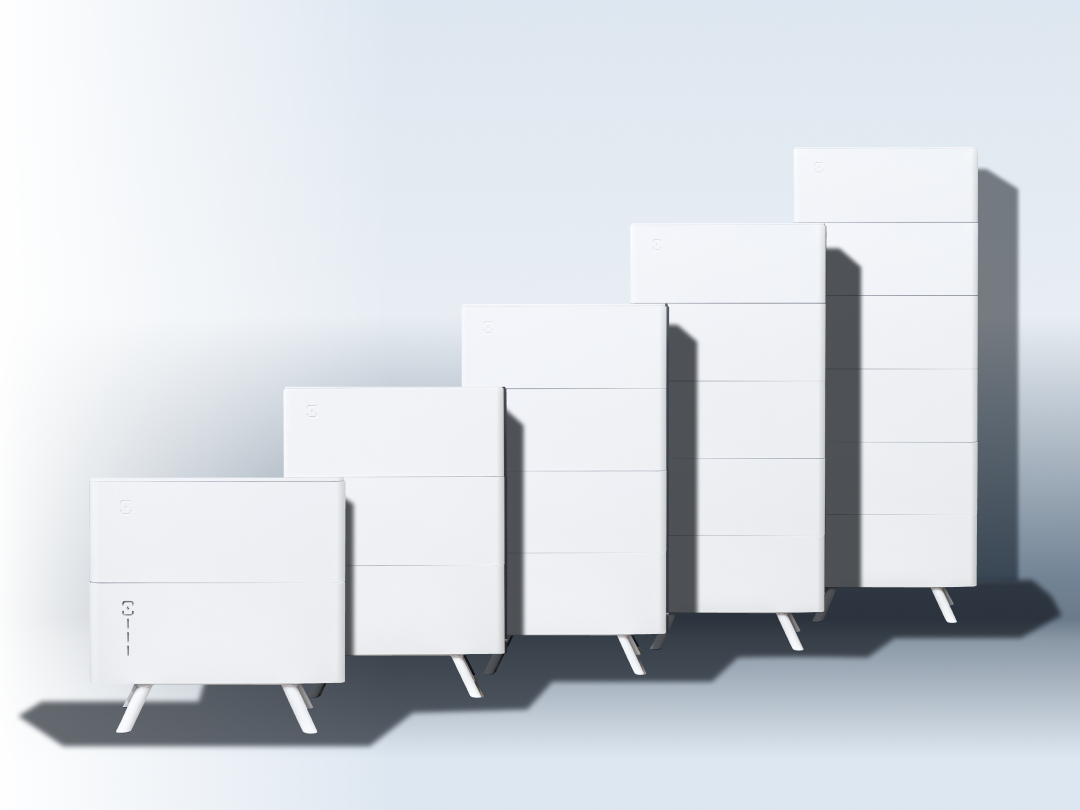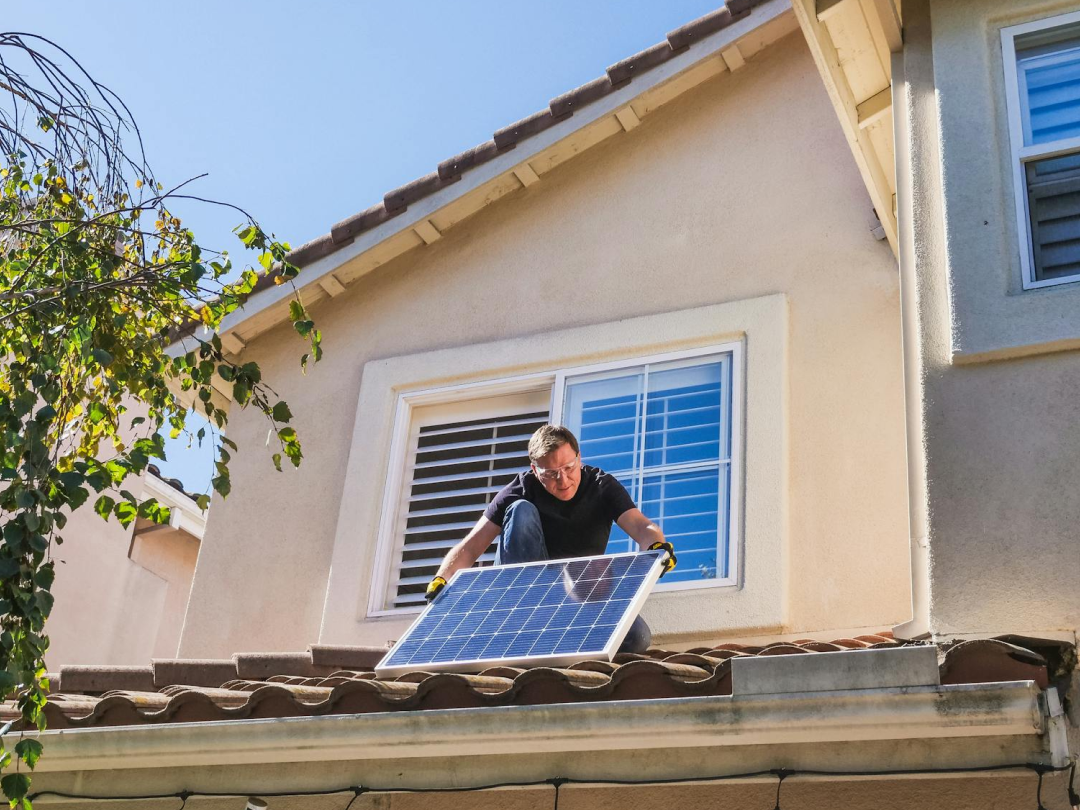The battery industry has made significant strides in recent years, resulting in more advanced and affordable technologies.
Batteries store power as direct current (DC), which needs to be converted to alternating current (AC) by a storage or solar inverter for household use.
The various components required to produce usable electricity are collectively known as the balance of the system.
As long as each part is compatible, the individual components of a home energy system can be bought separately and from different manufacturers.
However, many people prefer all-in-one home battery solutions, such as Moduly Nødz plug-and-play energy storage, for ease of use and improved performance.
There are several types of batteries used for energy storage applications, each with its own advantages and disadvantages. Here's an overview of the most common ones:

Lead-Acid Batteries
Lead-acid batteries are a mature and cost-effective technology, making them a popular choice for backup power and off-grid energy storage systems.
However, they have lower energy density, shorter lifespan (300-500 cycles), and require more maintenance compared to Li-ion batteries.
Advantages:
- Low upfront cost
- Mature and well-established technology
- High recyclability
Disadvantages:
- Low energy density
- Short cycle life (300-500 cycles)
- Poor high-temperature performance
- Relatively low efficiency (79-85%)
Suitable Applications:
- Backup power systems
- Off-grid energy storage
- Applications requiring low power/energy density
Lithium-ion Batteries
Lithium-ion (Li-ion) batteries are currently the most widely used for energy storage systems, especially for residential and commercial solar installations.
They offer high energy density, long cycle life (2,000-5,000 cycles), and relatively low self-discharge rates.
The main types of Li-ion batteries used for energy storage are:
-
Lithium Iron Phosphate (LFP)
Considered the best option for stationary storage due to high safety, long life, and lower cost. LFP batteries are less prone to thermal runaway.
-
Lithium Nickel Manganese Cobalt Oxide (NMC)
Provides higher energy density than LFP but at a higher cost and with slightly lower thermal stability.
-
Lithium Titanate Oxide (LTO)
Offers excellent power density and cycle life (10,000+ cycles) but lower energy density, making them more suitable for applications requiring frequent charging/discharging.
Advantages:
- High energy density and power density
- Long cycle life (2,000-5,000 cycles)
- Relatively low self-discharge rate
- Fast response time (sub-seconds to seconds)
Disadvantages:
- High upfront cost
- Safety concerns (thermal runaway risk)
- Poor high-temperature performance
- Currently complex to recycle
Suitable Applications:
- Electric vehicles
- Residential/commercial solar + storage
- Grid-scale energy storage

Flow Batteries
Flow batteries store energy in liquid electrolyte solutions that flow through an electrochemical cell during charge/discharge cycles.
They offer long cycle life, fast response times, and are suitable for large-scale energy storage.
The main types are:
-
Vanadium Redox Flow Batteries (VRFB)
Can be left completely discharged for long periods without degradation. Suitable for grid-scale storage but relatively expensive.
-
Zinc-Bromine Flow Batteries
Provide high energy density but have challenges with material availability and cost.
Advantages:
- Long cycle life (up to 30 years)
- High safety (non-flammable electrolytes)
- Deep discharge capability
Disadvantages:
- Low power density
- Large footprint (electrolyte storage tanks)
- Higher maintenance requirements
- Relatively low efficiency (65-70%)
Suitable Applications:
- Long-duration grid-scale energy storage
- Applications requiring consistent low power over long periods
In summary, lithium-ion batteries offer high performance but at a higher cost, while lead-acid batteries are low-cost but with lower energy density and cycle life.
Flow batteries sacrifice power density for exceptional longevity and safety, making them well-suited for large-scale, long-duration energy storage despite their higher upfront costs and maintenance needs.
The optimal choice depends on the specific power, energy density, cost, safety and cycle life requirements of the application.
Why LFP Batteries are a Better Fit for Us
-
Safety and Thermal Stability
LFP batteries are inherently safer than traditional lithium-ion batteries because the lithium iron phosphate cathode material is more stable and less prone to thermal runaway.
This makes them less likely to overheat, catch fire, or explode, even under abusive conditions.
-
Long Cycle Life
LFP batteries can typically withstand 2,000-7,000 charge/discharge cycles while retaining a high percentage of their initial capacity.
This extended cycle life is crucial for home energy storage systems like Moduly's, which undergo frequent charging and discharging cycles.
-
Low Self-Discharge Rate
LFP batteries have a low self-discharge rate, meaning they can hold their charge for a longer period without requiring frequent recharging.
This is advantageous for backup power applications, where the batteries may need to remain charged for extended periods before being called upon.
-
Environmental Friendliness
Unlike some other lithium-ion battery chemistries, LFP batteries do not contain toxic heavy metals like cadmium or lead, making them more environmentally friendly.
-
High Power Density
LFP batteries can deliver high power densities, making them suitable for applications that require high current discharge rates, such as powering household appliances during peak demand periods or outages.
By choosing LFP batteries, we can offer a safe, long-lasting, and environmentally friendly energy storage solution that aligns with our mission of promoting sustainable and cost-effective energy management.
Sources:
- https://www.energy.gov/energysaver/articles/how-lithium-ion-batteries-work
- https://ul.org/research/electrochemical-safety/getting-started-electrochemical-safety/what-are-lithium-ion
- https://news.mit.edu/2023/flow-batteries-grid-scale-energy-storage-0407
- https://www.accessengineeringlibrary.com/content/book/9781260115925





1 comment
hayet
merci beaucoup pour ces informations ;j’adore ce site .je vous souhaite une bonne continuation.
hayet.
s.hayet.
merci beaucoup pour ces informations ;j’adore ce site .je vous souhaite une bonne continuation.
hayet.
s.hayet.